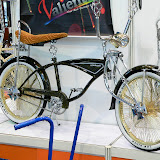New capacitor material could make them practical for EVs
One of the means that electrically powered vehicles used to maximize their range is regenerative braking where the kinetic energy of the vehicle is recaptured during deceleration and than released during acceleration. The problem is that most batteries can't absorb energy quickly enough to capture all the available energy. This is where capacitors have an advantage since they can absorb energy a lot faster than batteries and do it a lot more times. Unfortunately the total energy capacity is limited, which also limits their usefulness. While a lithium ion battery pack could contain enough energy to drive a vehicle a couple of hundred miles, an ultra-capacitor pack would be lucky to get a few miles. Original post








